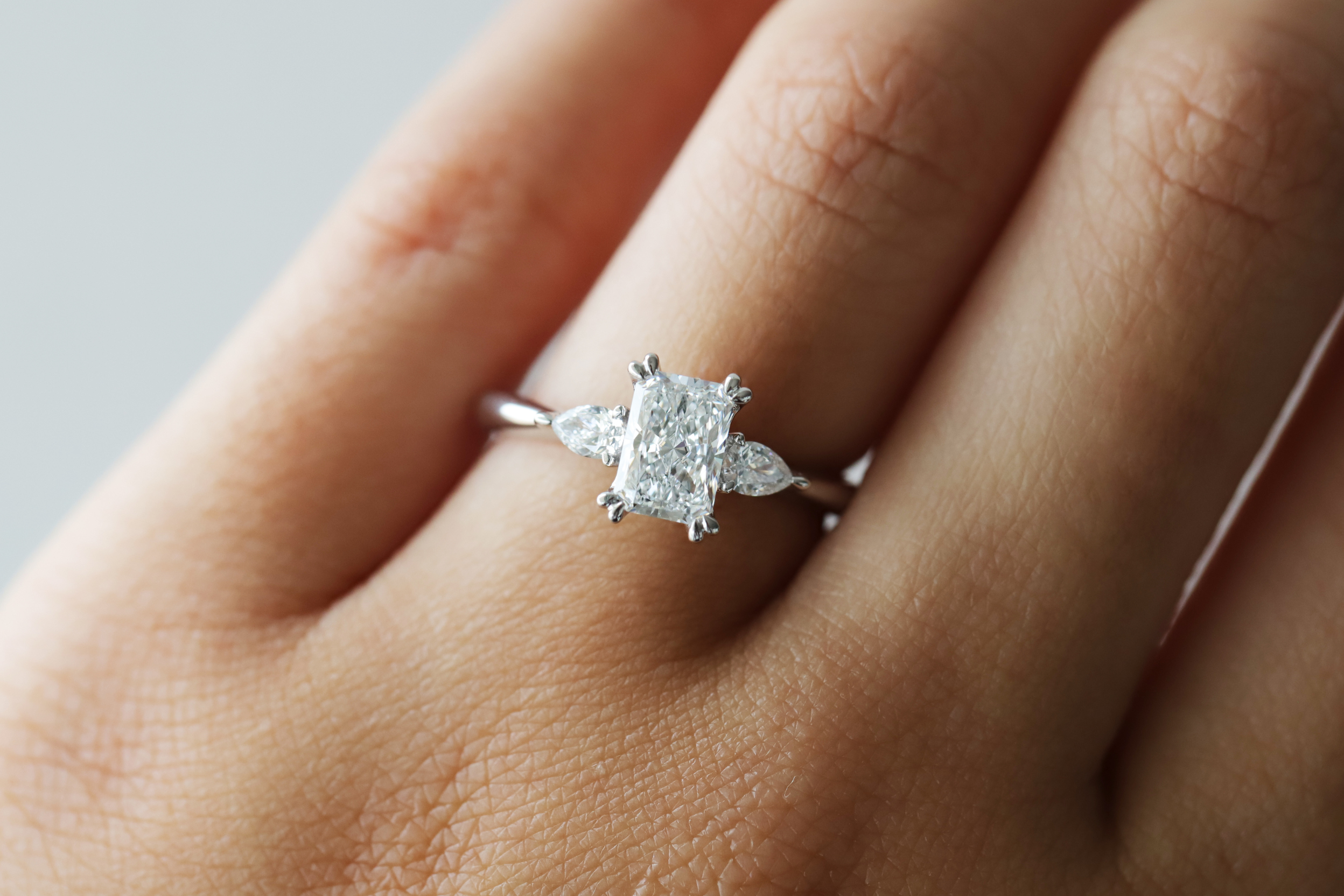Moissanite Diamond: A Comprehensive Guide to Brilliance and Affordability
June 20, 2024Moissanite, often referred to as a “diamond alternative,” has gained popularity in recent years for its brilliance, durability, and affordability. Initially discovered in 1893 by Henri Moissan, this gemstone has since been synthesized for various commercial uses, especially in jewelry. If you’re considering moissanite for your next jewelry purchase, understanding its characteristics, benefits, and comparison with natural diamonds can help you make an informed decision.
Table of Contents
Introduction to Moissanite
What is Moissanite?
Moissanite is a naturally occurring silicon carbide discovered in a meteor crater in Arizona by Henri Moissan. It possesses unique optical properties that make it exceptionally sparkly and radiant.
History of Moissanite Discovery
Henri Moissan initially mistook moissanite diamond for diamonds due to its brilliance and hardness. It wasn’t until later analysis revealed its distinct chemical composition and origin.
Properties of Moissanite
Physical Properties
Moissanite ranks high on the Mohs scale of hardness, second only to diamonds, making it suitable for everyday wear. Its crystalline structure allows for exceptional light dispersion.
Optical Properties
Known for its fire and brilliance, moissanite refracts light better than diamonds, giving it a fiery sparkle that’s highly desirable in jewelry.
Durability
Moissanite is highly resistant to scratching, chipping, and breaking, making it a practical choice for engagement rings and daily wear jewelry.
Comparison with Natural Diamonds
Brilliance and Sparkle
Moissanite exhibits more fire and brilliance than diamonds due to its higher refractive index, which results in a rainbow-like effect when exposed to light.
Hardness and Durability
While diamonds are the hardest natural substance, moissanite’s close second place on the Mohs scale means it’s also very durable and suitable for long-term wear.
Cost Comparison
One of the most significant advantages of moissanite is its affordability compared to diamonds of similar size and appearance, making it a budget-friendly option for many.
Types of Moissanite
Colors and Grades
Moissanite comes in various grades and colors, ranging from colorless to near-colorless, with different grades affecting its brilliance and price.
Shapes and Cuts
Similar to diamonds, moissanite is available in numerous shapes and cuts, including round brilliant, princess cut, and cushion cut, catering to different aesthetic preferences.
How Moissanite is Created
Manufacturing Process
Moissanite is synthesized in laboratories using advanced technology to replicate the natural conditions under which it forms in nature, ensuring high quality and consistency.
Environmental Impact
Unlike diamond mining, moissanite production has a minimal environmental footprint, making it a more sustainable choice for eco-conscious consumers.
Benefits of Choosing Moissanite
Affordability
Moissanite costs significantly less than diamonds of comparable size and quality, allowing buyers to opt for larger stones or additional customization within their budget.
Ethical Considerations
As a lab-created gemstone, moissanite is conflict-free, offering peace of mind to consumers concerned about the ethical implications of diamond mining.
Customization Options
Moissanite’s availability in various cuts and sizes provides ample opportunities for customization, ensuring each piece of jewelry is unique and personal.
Common Myths about Moissanite
Myths vs. Facts
Addressing common misconceptions about moissanite, such as its perceived lack of brilliance or durability compared to diamonds, with factual evidence.
Debunking Misconceptions
Explaining how moissanite’s optical properties and physical characteristics dispel myths and misconceptions surrounding its value and desirability.
Caring for Moissanite
Cleaning Tips
Offering practical advice on how to clean and care for moissanite jewelry to maintain its brilliance and longevity.
Maintenance Advice
Guidelines for periodic maintenance and professional cleaning to ensure moissanite jewelry retains its sparkle and allure over time.
Moissanite in Jewelry Industry
Popularity in Engagement Rings
Exploring the growing trend of using moissanite in engagement rings due to its affordability, brilliance, and ethical considerations.
Other Jewelry Uses
Highlighting the versatility of moissanite beyond engagement rings, including earrings, necklaces, and bracelets, appealing to a wide range of jewelry enthusiasts.
Customer Reviews and Feedback
Positive Experiences
Sharing anecdotes and reviews from satisfied customers who appreciate moissanite’s beauty, affordability, and durability in everyday wear.
Criticisms and Concerns
Addressing common criticisms or concerns raised by consumers regarding moissanite’s authenticity, maintenance, or comparison to diamonds.
Where to Buy Moissanite
Online Retailers
Listing reputable online stores and platforms where consumers can purchase high-quality moissanite jewelry with confidence and convenience.
Physical Stores
Highlighting brick-and-mortar jewelry retailers that offer moissanite options, lab created diamonds, allowing customers to see and experience the gemstone in person before purchase.
Choosing the Right Moissanite
Factors to Consider
Guiding readers on important factors to consider when selecting moissanite, such as cut, color, clarity, and carat weight, to suit personal preferences and style.
Personal Preferences
Encouraging readers to prioritize their preferences and lifestyle when choosing moissanite jewelry, ensuring satisfaction with their purchase in the long term.
Conclusion
In conclusion, moissanite offers a compelling alternative to natural diamonds, combining affordability, brilliance, and ethical considerations in one beautiful gemstone. Whether you’re shopping for an engagement ring or a stunning piece of jewelry, moissanite’s unique properties and benefits make it a worthy contender in the world of gemstones.













